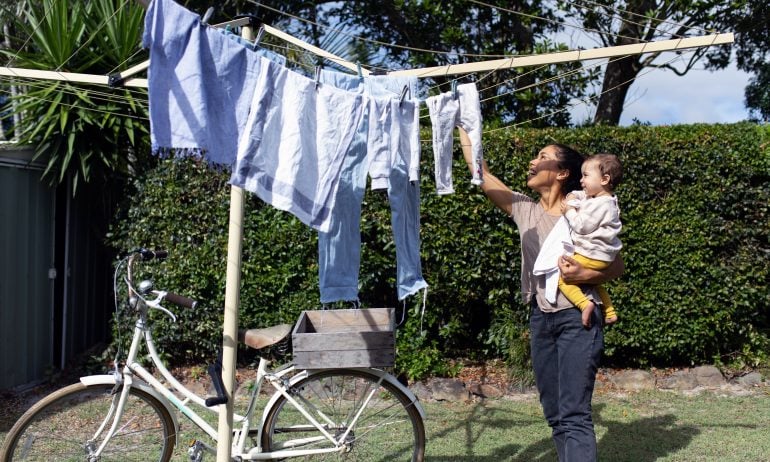How to Get Affordable Life Insurance
If you’re shopping for life insurance on a budget, there are a few ways to score a lower premium.

Many, or all, of the products featured on this page are from our advertising partners who compensate us when you take certain actions on our website or click to take an action on their website. However, this does not influence our evaluations. Our opinions are our own. Here is a list of our partners and here's how we make money.
Life insurance sounds complicated, but you might be surprised to learn how affordable life insurance can be — especially if you buy it while you’re young and healthy. For example, let’s look at a 20-year, $500,000 term life policy. A 30-year-old could lock in a monthly premium to match the price of a movie ticket (and maybe some popcorn, depending on where you live).
Many of the factors that go into your life insurance premium are out of your control, such as your age and health at the time of purchase. Others come down to the type and amount of coverage you’re buying.
But there are steps you can take to lower your premium and get the most affordable life insurance.
Choose term life insurance
Term life insurance is the simplest and cheapest type of policy, and it’s sufficient for most people. It lasts a set number of years, and it’s designed to cover you while you have financial dependents or obligations, such as paying off a mortgage or raising children. If you die during the term, your life insurance beneficiaries will receive a payout and can use the money however they wish.
To compare, permanent life insurance is significantly more expensive. That’s because permanent policies, such as whole life insurance, typically offer coverage that lasts your entire life. They also have a cash value component that can grow over time.
If you’re in the market for a permanent policy, universal life insurance or variable life insurance offer some flexibility with payments. These policies allow you to adjust your premiums, which could come in handy if your income fluctuates.
» MORE: Average life insurance rates
Opt to take the medical exam
If you’re relatively healthy, it’s worth picking a policy that requires a life insurance medical exam. The exam is similar to a physical, and you can schedule an appointment at a time and place that’s convenient for you — like your home. A technician will ask about your medical history, record metrics like your blood pressure, height and weight and take blood and urine samples to check your nicotine, cholesterol and glucose levels. The insurer then uses this information to set premiums.
Without these details, the insurer has to take on the risk of the unknown. For that reason, life insurance that doesn’t require a medical exam tends to be more expensive.
Buy a policy as soon as you need it
Life insurance companies reserve their best rates for young, healthy applicants, so it’s a good idea to buy coverage as early as possible if you know you need it. As you age, your risk of running into health issues goes up, and your life expectancy goes down.
With many types of life insurance, your premiums are locked in for the life of the policy — even if your health deteriorates. So if you’re looking for affordable life insurance, the sooner you apply, the better.
» MORE: Do I need life insurance?
Try to quit smoking
Using tobacco and nicotine-based products is linked to a host of health issues, such as cancer, respiratory disease and diabetes. Smoking is also the leading cause of preventable death in the U.S., according to the American Lung Association.
Because of this risk, smokers almost always pay more for life insurance. Depending on the insurer, you may be considered a smoker if you use cigarettes, vaping devices, cigars, pipes, chewing tobacco and nicotine patches or gum.
To qualify for nonsmoking rates, you typically need to prove you’ve been smoke-free for at least 12 months. If you’re in the process of quitting but need life insurance now, you can go ahead and apply for a policy. Your coverage will be priced at smoker rates, but you might be able to request a review of your rates once you’ve passed your insurance company’s time period for being considered a smoker. This time frame varies by insurer, so it’s worth factoring in when you’re comparing life insurance companies. You can also consider buying a short-term life insurance policy and then applying for a traditional term life insurance policy once you’ve kicked the habit for good.
Buy only as much coverage as you can comfortably afford
Calculate how much life insurance you need and get quotes for that amount from multiple insurers. Then choose a policy that fits your budget or, if needed, reduce your coverage to the highest amount you can get for the premium you can afford.
If you have dependents, some life insurance is better than none, and you can likely purchase more coverage when you’re in a better financial position.
Consider rounding up your coverage
Just like buying in bulk, you might save by purchasing a slightly higher amount of coverage. For example, you could score a discount if you buy $250,000 in coverage, rather than $200,000.
Once you’ve determined how much life insurance you need, ask insurers about their “benefit tiers” or thresholds for premium discounts.
Work on improving your health
As part of the life insurance application, insurers assess your body mass index (BMI). Since insurers interpret high BMIs as linked to chronic health conditions, if you’re overweight or obese based on that index, you’ll likely pay a higher premium. With a lower BMI, you might be able to get more affordable life insurance rates.
The same goes for cholesterol and blood pressure. If you can maintain a total cholesterol level of less than 200 milligrams per deciliter (mg/dL) and a blood pressure reading of less than 120/80, you have a good chance of accessing lower premiums with most companies. Eating a nutrient-rich diet, exercising regularly, avoiding smoking and reducing your sodium and alcohol intake can improve your health and help you land in a better rate class.
Plus, some insurers reward policyholders who live healthy lifestyles with discounted premiums. For example, you can save up to 25% on your premium with John Hancock’s Vitality PLUS program by eating well and staying active.
Every insurance company assesses these types of health metrics differently. If you have an issue with some aspect of your health, compare quotes from a handful of insurers to make sure you’re getting the coverage you need at the lowest possible price.
Manage any preexisting medical conditions
To find affordable life insurance with a preexisting condition, focus on the things you can control.
If you can prove you’re managing your condition by going to regular checkups, taking your medication as directed and following your doctor’s orders, you might be able to score standard or preferred rates.
If you end up with a pricey policy thanks to a preexisting condition, you might have the option to request “reconsideration” after a certain amount of time has passed. The insurer will reassess your health and may adjust your premiums if you’ve shown improvement.
Skip riders you don’t need
When you apply for life insurance, you might have the option to add extra features to your policy known as “riders.” They’re designed to bridge any gaps in your coverage, but you may not need all of them.
While some riders are free, others will raise your overall premium. For example, adding a return-of-premium rider, which reimburses you for the premiums you paid if you outlive the term, can make your policy up to five times more expensive.
Ask about discounts for paying your premium annually
With most companies, you can opt to pay your insurance premiums monthly, quarterly, semiannually or annually. But some insurers charge an additional service fee to policyholders who choose frequent payments, a practice known as “fractional premiums.”
If you can afford the higher upfront payment, you could save up to 5% by paying your premium once or twice a year.
Shop around
With more than 800 life insurance companies in the U.S., our advice is to let insurers compete for your business. Comparing quotes from multiple insurers is one of the most effective ways to find an affordable life insurance policy.
» MORE: Compare life insurance quotes


